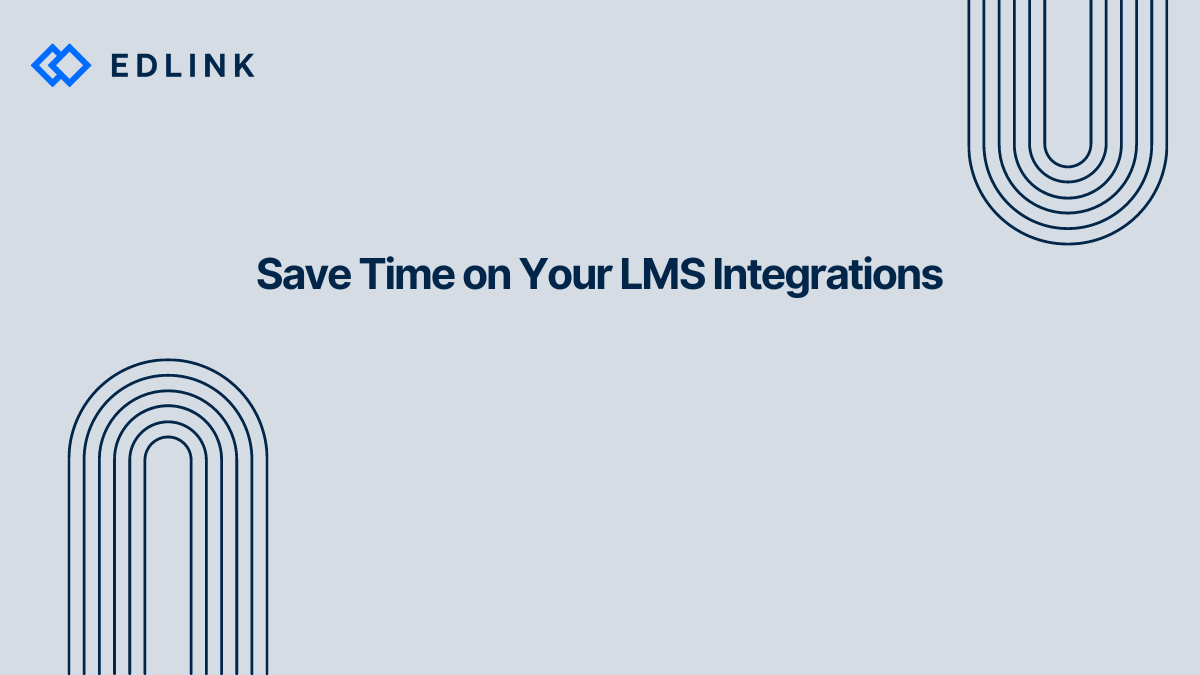LMS integrations may seem like a new idea for the edtech industry, but when it comes down to the functionality edtech products can get from these connections, LMS integrations become highly requested by users (educators, students, and learning institution staff/admins) - within our experience. LMS integrations can provide features like:
- Single Sign-On (SSO) | Easier user logins by identifying and authenticating users from their previous location
- Rostering | Removing the manual process of creating and organizing classes, enrollments, and other student information (read: removing copy and pasting)
- Assignment Sync | Presenting assignments and content in one location for users to access
- Grade Passback | Removing the manual copy-and-paste process of adding grades in multiple locations
Imagine an edtech developer implementing all of these features into a product. In our perspective, edtech integrations aren’t simple and can take a lot of time to build. In the process of building integrations, developers will soon discover that learning institutions may use different LMS providers, like one learning institution might use Google Classroom and another could use Schoology. Plus each LMS provider also comes with quirks (read: different ways to store user data), so to compensate for the quirks, learning institutions sometimes come up with different “workaround” methods to store data in a way that makes sense. All of these quirks, workarounds, and variation of LMS providers makes building LMS integrations a lengthy and daunting task to complete.
How Can Edtech Developers Integrate Faster?
In other industries when a company wants all of the integrations into one easily digestible format, the company may use a unified API. By using this approach, only one integration has to be built since the unified API connects to several other school data systems, in this case, LMS providers. Besides only building one integration, the platform abstracts data from its connections into a standardized format that can be retrieved or updated through a single API. For edtech developers that means a unified API would already be able to normalize data from LMS quirks, versions, and most user workarounds.
This is what Edlink is, a unified API that connects several school data sources, like LMS providers, into one API. That way, edtech developers can have a better and more straightforward approach to building LMS integrations and gain integrated features like SSO, rostering, assignment sync, and grade passback. In turn, integrating to Edlink saves developer teams hundreds of hours not building integrations while expanding a product’s connections and functionality.
Groundwork for School Data Integrations
Edlink currently supports connections with the following LMS providers:
Edlink supports connection with the following SIS providers, too:
- PowerSchool
- Aeries
- Aspen
- Blackbaud
- Skyward SMS
- Skyward Qmlativ
- Veracross
- Infinite Campus
- Synergy
- FACTS by Renweb
- Bromcom
We also provide integrations with data providers, including:
*article last updated | 11.15.23
Read More on Integration
Here are other articles we’ve written on building integrations to help you on your journey:
- What to know about Single Sign-On for Education
- Single-tenant vs Multi-tenant: What’s better for your app’s security
- Case Study: Schoolrunner
- Why would I Work with Edlink Instead of Just Building My Own LTI Application?
- District Onboarding with Edlink
Learn More about Edlink
If you're looking for a partner who can help guide you through developing LMS integrations (like these), then let’s introduce ourselves. We’re Edlink!

